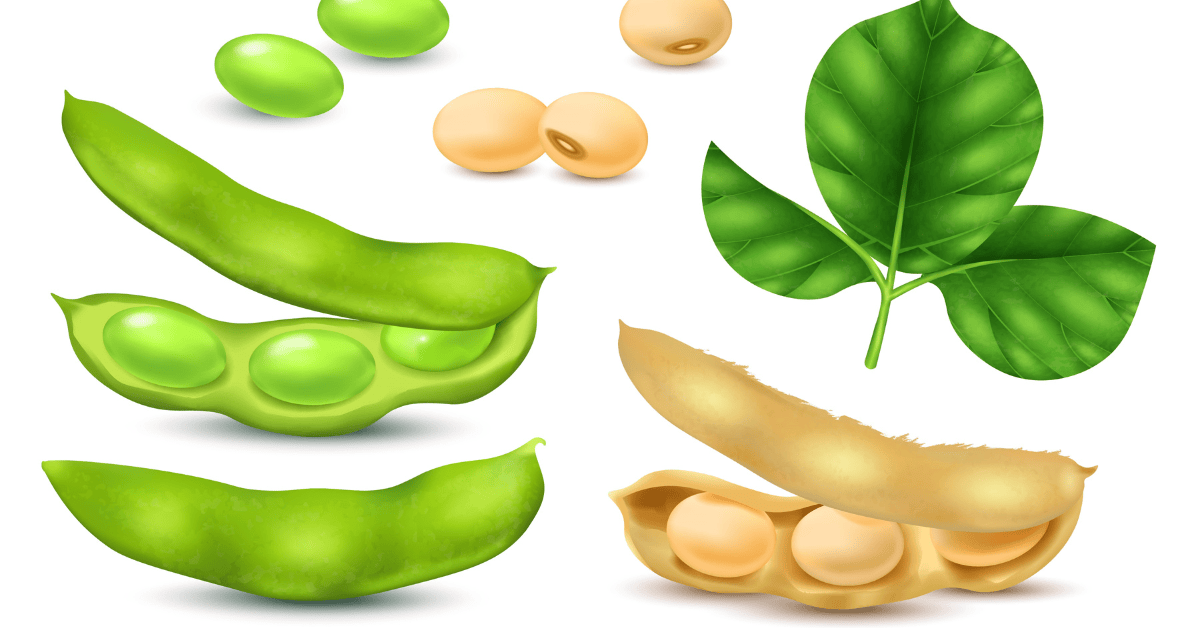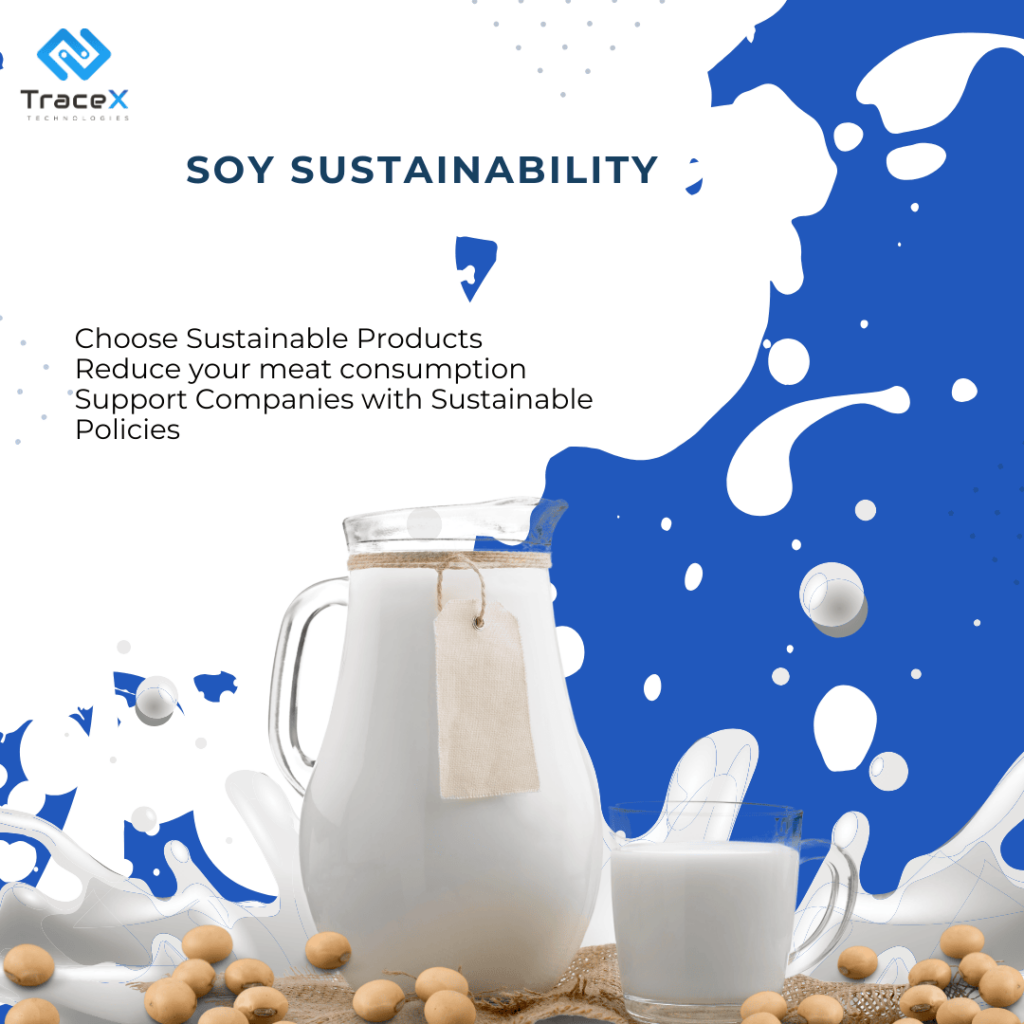Contact: +91 99725 24322 |
Menu
Menu
Quick summary: Explore the hidden crisis of soy deforestation, its global impact, and how technology and the EU Deforestation Regulation (EUDR) are driving sustainable solutions to preserve ecosystems and combat climate change.

Did you know that soy deforestation, often overshadowed by other environmental crises, is a significant driver of habitat loss, particularly in regions like the Amazon rainforest? While we savor our soy lattes and enjoy various products containing soy, a hidden crisis unfolds beneath the surface. This rapidly expanding crop is responsible for clearing vast tracts of vital ecosystems, threatening biodiversity and contributing to climate change.
In fact, a staggering 77% of soy is used for animal feed, particularly in the meat and dairy industries . This means the global demand for meat indirectly drives the expansion of soy farming, which in turn leads to deforestation.
The very crops that sustain us can also undermine the health of our planet. As the demand for soy continues to rise, so does the urgency to address the environmental impact of its cultivation. How can we balance our need for food and agriculture with the pressing necessity of preserving our forests?
Key Takeaways
Soy deforestation refers to the large-scale clearing of forests, particularly tropical rainforests, to make way for soybean farming. While soybeans are used in a variety of products like tofu, soy milk, and even processed foods, the majority of the world’s soy crop isn’t directly consumed by humans.
The most significant areas impacted by soy deforestation are:
The scale of soy deforestation is massive. Between 2001 and 2015, an estimated 8% of global deforestation was attributed to soy expansion, with the most severe impacts being seen in South America . The Amazon has lost approximately 17% of its forest cover in the last 50 years, and soy is a major contributor to this loss.
In the Cerrado, things are even more alarming. This vital ecosystem has seen half of its original area cleared, with soy being one of the main drivers.
If the current rate of deforestation continues, it’s projected that the Cerrado could lose an additional 34% of its native vegetation by 2050 .
The main reason soy causes so much deforestation is simple: land. Soybean farming requires vast tracts of land to be profitable, and as global demand for soy rises, farmers and agricultural corporations clear forests to plant more soybeans.
As mentioned earlier, a large portion of the world’s soy crop is used for animal feed.
With global meat consumption expected to rise by 76% by 2050, the demand for soy is likely to keep growing.
More meat means more soy is needed to feed livestock, driving further deforestation.
Soybeans are also used to produce biofuels, particularly biodiesel. As the demand for alternative energy sources grows, the expansion of biofuel production could lead to more land being cleared for soy.
In countries like Brazil, soy farming is a major source of income and economic growth. This makes it challenging to implement policies that limit deforestation when there’s a strong economic drive to expand soy production.
1. Biodiversity Loss: Forests like the Amazon and the Cerrado are incredibly biodiverse, home to countless species of plants, animals, and insects. When these ecosystems are destroyed for soy farming, it leads to habitat loss, endangering species that may not survive outside of their natural habitats.
2. Carbon Emissions: Forests act as carbon sinks, absorbing carbon dioxide from the atmosphere and helping to mitigate climate change. When forests are cleared, not only is this carbon-absorbing function lost, but the carbon stored in trees is released into the atmosphere, contributing to global warming.
Soy deforestation is a significant contributor to Brazil’s total CO2 emissions, with deforestation accounting for 45% of its greenhouse gas emissions .
3. Water Cycle Disruption: Forests play a crucial role in the water cycle, influencing rainfall patterns and maintaining water resources. When large areas of forest are cleared, local and even regional water cycles are disrupted, potentially leading to droughts, reduced agricultural productivity, and other water-related issues .
4. Indigenous and Local Communities: Many Indigenous groups and local communities in regions affected by soy deforestation rely on forests for their livelihoods, food, and cultural practices. Deforestation often displaces these communities, leading to social conflicts, loss of traditional ways of life, and economic hardship.

Efforts to reduce soy-related deforestation are gaining momentum, but there is still much work to be done.
For businesses involved in the soy supply chain, understanding and complying with the EUDR is not only crucial for regulatory adherence but also essential for contributing to a more sustainable future.
Technology is essential for ensuring EUDR compliance in soy supply chains by enhancing transparency, traceability, and accountability. From blockchain for traceability, satellite monitoring for deforestation tracking, AI-powered risk assessments, to digital certifications, technology helps businesses demonstrate compliance with the regulation while reducing the environmental impact of soy production.
The TraceX EUDR Compliance Platform is a blockchain-based solution that enables businesses to ensure compliance with the EU Deforestation Regulation (EUDR) by providing end-to-end traceability of commodities like soy, palm oil, and cocoa. It allows companies to track products across their supply chain, offering a transparent and immutable digital record that proves deforestation-free sourcing. With real-time monitoring through satellite data, risk assessments of suppliers, and automated document management, the platform simplifies the complex due diligence process, ensuring businesses meet EUDR requirements while demonstrating their commitment to sustainability.
Soy deforestation remains a critical yet often overlooked environmental challenge. With global demand for soy continuously rising, sustainable practices and strict regulations like the EU Deforestation Regulation (EUDR) are more crucial than ever. Through technology-driven solutions such as traceability platforms, remote monitoring, and risk assessments, businesses can ensure deforestation-free soy sourcing and contribute to long-term environmental conservation. Collective action, supported by transparent supply chains and responsible sourcing, is vital to reversing the damaging impacts of soy-driven deforestation.
Soy deforestation refers to the clearing of forests and ecosystems to make room for large-scale soy farming, especially in critical areas like the Amazon rainforest. This practice contributes to biodiversity loss and climate change.
The EUDR requires companies importing soy and other commodities into the EU to ensure that their products are not linked to deforestation. This involves conducting due diligence, traceability, and risk assessments throughout the supply chain.
Technologies like blockchain, satellite monitoring, and AI-powered risk assessments help businesses ensure transparent, deforestation-free supply chains by tracking soy from farm to market, assessing risks, and providing verifiable data for compliance with regulations like the EUDR.
